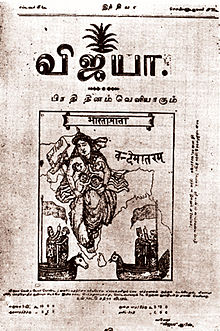The viceroy Lord Curzon (1899–1905) was unusually energetic in pursuit of efficiency and reform.[86] His agenda included the creation of the North-West Frontier Province; small changes in the Civil Service; speeding up the operations of the secretariat; setting up a gold standard to ensure a stable currency; creation of a Railway Board; irrigation reform; reduction of peasant debts; lowering the cost of telegrams; archaeological research and the preservation of antiquities; improvements in the universities; police reforms; upgrading the roles of the Native States; a new Commerce and Industry Department; promotion of industry; revised land revenue policies; lowering taxes; setting up agricultural banks; creating an Agricultural Department; sponsoring agricultural research; establishing an Imperial Library; creating an Imperial Cadet Corps; new famine codes; and, indeed, reducing the smoke nuisance in Calcutta.[87]
Trouble emerged for Curzon when he divided the largest administrative subdivision in British India, theBengal Presidency, into the Muslim-majority province of East Bengal and Assam and the Hindu-majority province of West Bengal (present-day Indian states of West Bengal, Bihār, and Orissa). Curzon's act, the Partition of Bengal—which some considered administratively felicitous, communally charged, sowed the seeds of division among Indians and, which had been contemplated by various colonial administrations since the time of Lord William Bentinck, but never acted upon—was to transform nationalist politics as nothing else before it. The Hindu elite of Bengal, among them many who owned land in East Bengal that was leased out to Muslim peasants, protested fervidly.[88]
The large Bengali Hindu middle-class (the Bhadralok), upset at the prospect of Bengalis being outnumbered in the new Bengal province by Biharis and Oriyas, felt that Curzon's act was punishment for their political assertiveness. The pervasive protests against Curzon's decision took the form predominantly of the Swadeshi ("buy Indian") campaign led by two-time Congress president,Surendranath Banerjee, and involved boycott of British goods.[89]
The rallying cry for both types of protest was the slogan Bande Mataram ("Hail to the Mother"), which invoked a mother goddess, who stood variously for Bengal, India, and the Hindu goddess Kali. Sri Aurobindo never went beyond the law when he edited the Bande Mataram magazine; it preached freedom but within the bounds of peace as far as possible. Its goal was Passive Resistance.[90] The unrest spread from Calcutta to the surrounding regions of Bengal when students returned home to their villages and towns. Some engaged in robbery to fund terrorist activities such as bombing public buildings, but the conspiracies generally failed in the face of intense police work.[91]
In 1906 the civil police (completely separate from the Army) comprised 29,000 officers and 138,000 men.[92] Arnold shows that in the Madras presidency the armed police were divided into the district reserves and the striking forces. Armed with seven-foot metal tipped lathis and smoothbore muskets, and tear gas after 1940, they repressed the disturbances of 1930–33. Special striking forces included the Malabar Special Police, armed with Enfield rifles. It was established to handle the Moplah rebellion of 1921 and was used throughout the presidency. The Presidency General Reserve was established in 1931.[93]
The Swadeshi boycott movement cut imports of British textiles by 25%. The swadeshi cloth, although more expensive and somewhat less comfortable than its Lancashire competitor, was worn as a mark of national pride by people all over India.[94]



No comments:
Post a Comment